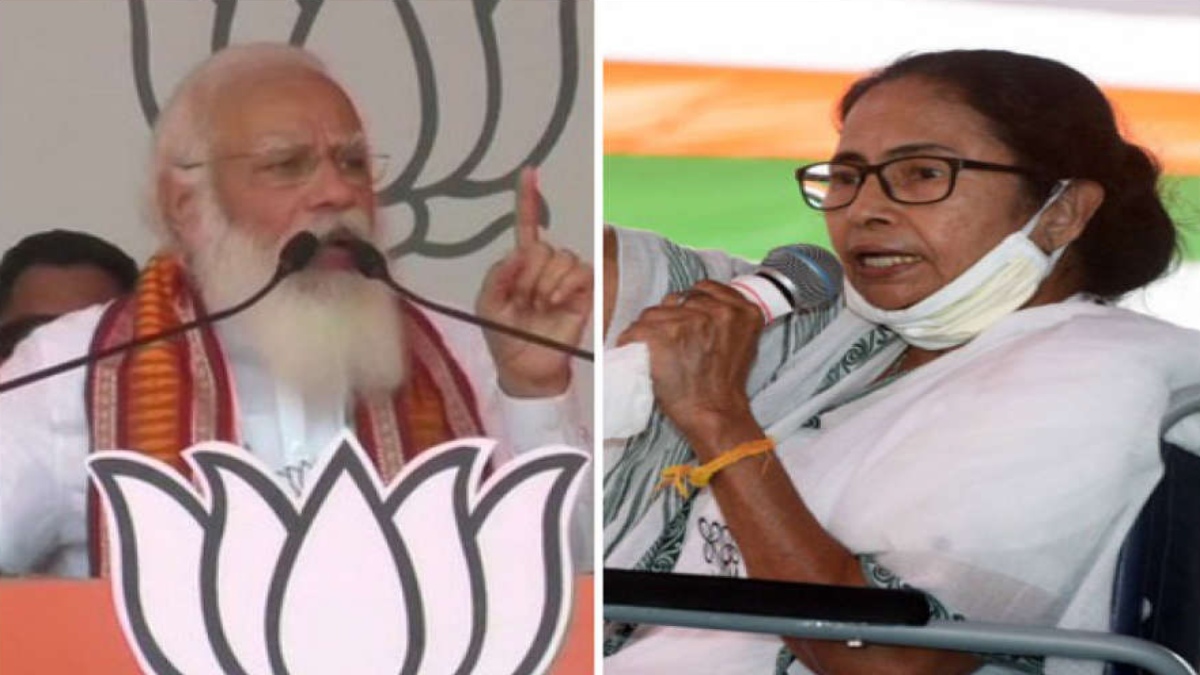
Congratulations to Mamata Banerjee for bringing back her party, Trinamool Congress, to power in West Bengal for the third term, although she herself lost her seat to her former lieutenant, Suvendu Adhikari, who is now with the Bharatiya Janata Party. But that will not stop her from being sworn in as Chief Minister, as she has six months to fight another election from a safe seat where she gets a sure-shot victory. As for BJP, let it not be under the illusion that just because it got nearly 80 seats from a mere three seats in 2016, its performance has been fantastic. In fact, compared to the Lok Sabha elections, its performance has been dismal. From around 120 seats—if the 18 Lok Sabha seats it won are converted to Assembly seats—it has gone down to the range of 80. So there has been a loss of around 40 seats. Of course, people vote differently in Lok Sabha and Assembly elections, but even then, in the 2021 elections the BJP actually had the opportunity to pose a much better challenge to Mamata Banerjee if it had got a proper strategy in place. Getting defectors from the TMC has not worked, with most of the defectors losing, as people refused to vote for the “turncoats”. Even Suvendu Adhikari, BJP’s biggest catch from the TMC, had limited influence, although he managed to defeat the Chief Minister in a very close fight. But then not everyone is a Suvendu Adhikari who can pull off a win against a sitting Chief Minister in a 50:50 fight.
Let’s make no mistake, there was enough unhappiness on the ground against the Mamata Banerjee government—may not be against the Chief Minister personally, but against her MLAs. But aided by Prashant Kishor, the TMC had a better strategy in place and had a far superior ground connect than the BJP, which helped the ruling party overcome the hurdle of anti-incumbency. Also, it was able to mobilise voters better than the BJP on election day. It looks like the BJP took for granted that people were in the mood for change and hence would vote for them automatically. They also took for granted counter-consolidation by the majority community in response to the polarization among the minority community. But neither happened. Moreover, the message of a “double engine” government, with the same party’s government at the state and at the Centre did not reach the masses. Perhaps the BJP did not realise that Bengal, having been out of the national mainstream for over 45 years (34 years of the CPM, which is more like a regional party than national, and 10 years of TMC), has forgotten what it means to be ruled by a party which can ensure a steady flow of funds and investment to the state. A sort of ennui has set in where most people adjust to the reality of Bengal being an industrially barren, jobless, opportunity-less landscape, while those who have aspirations leave the state. Additionally, the local parties, both CPM and TMC have made “bonchona”—discrimination—by the Central government one of their main talking points as a diversionary tactic for their failure to deliver. People are used to “being discriminated” against by the Centre, so it does not matter to a large section if funds from the Centre come or do not come. Moreover, the population of the state has been fed a steady diet of Bengali exceptionalism because of which a large section actually believes that what they have is better than what most other states have. Awareness about development activities in other states is very low, hence some municipal level work done by the state government is taken as a sign of huge development—and there is no denying that a lot of municipal level work has happened during Mamata Banerjee’s tenure. There are people who actually believe that Kolkata is the best city to live in, in India. Also, the TMC-CPM promoted narrative of BJP being a “communal” party and riots will start if it comes to power has takers among a large section of the population.
In spite of all these factors, BJP had a chance because of criminality and corruption on the ground and a limited degree of communal polarization that has taken place. But BJP’s problem was in the communication. Its message did not reach the ground in the language that the local people understand—Bengali. The focus was on big rallies and rathyatras, when focus should have been on door-to-door campaigning and street-corner meetings. The RSS cadre that flocked to the state during the polls from other states did not speak the language, hence the message was lost in translation. Candidate selection was a major problem, with TMC defectors being given more importance than hard-working local BJP workers and leaders. Hence, a large section of the local BJP either did not take the party’s message to the ground, or simply did not work for their candidates. Also, the lack of a CM face really hurt the BJP, when the competition was someone as popular as Mamata Banerjee. The bottom line is, it was an election for the BJP to lose and it lost it.
As for Mamata Banerjee and her party, it is time she sent out the message to TMC workers that the party’s victory is not an endorsement of their hooliganism. The kind of violence that is taking place in Bengal primarily against BJP workers and sympathisers cannot be allowed to continue in a civilized state. It’s time to be magnanimous in victory, not vengeful.